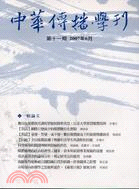 閱覽人數: 897
閱覽人數: 897
June
2007
No. 11
頁數:71 - 109
作者(中)
陳綱佩、張寶芳、洪瑞雲
作者(英)
Kang-Pei Chen, Christine P. Chang & Ruey-Yun Horng
關鍵詞(中)
文本理解 ; 科學新聞寫作 ; 隱喻 ; 命題分析
關鍵詞(英)
text comprehension ; science reporting ; metaphor ; proposition analysis
中文摘要
本研究探討科學文本中使用隱喻是否會增進讀者對科學文本內容的理解。以33位高中學生為受試者,每位閱讀四篇改寫自媒體上的科學報導,其中有兩篇使用與所要報導的科學知識主旨類似的隱喻,另兩篇則不含隱喻。隱喻加在科學文本第一段的第一句,有無隱喻為受試者內變項。受試者在讀完每篇報導之後,分別以自由回憶方式寫出報導的內容。以Kintsch (1988)命題分析中的巨觀命題作為自由回憶的內容的分析單位,統計結果顯示,在科學文本中使用隱喻,受試者對科學報導內容的正確巨觀命題回憶量顯著較高,同時錯誤的巨觀命題回憶量顯著較低。此外,研究也發現受試者閱讀有使用隱喻的科學文本時,全文主旨掌握程度顯著高於未使用隱喻的科學文本。本研究因此結論:在科學報導中使用隱喻可以提昇讀者的閱讀理解。
英文摘要
The purpose of this research was to examine whether or not applying metaphor in science news might increase text comprehension. Thirty-three high school students participated in the experiment. Each student was asked to read four science news, two with metaphor and two without metaphor. The metaphor sentence was embedded at the very beginning of the text. Participants were asked to write down their free recalls of the article immediately after reading the four stories. The number of macro-propositions recalled and the accuracy of the situation model of the science text were used as the measures of text comprehension. The results support our hypotheses that: (1) applying metaphor enhances the comprehension of gist in a science report; and (2) applying metaphor in science reporting may help readers construct a more correct situation model of the scientific findings.